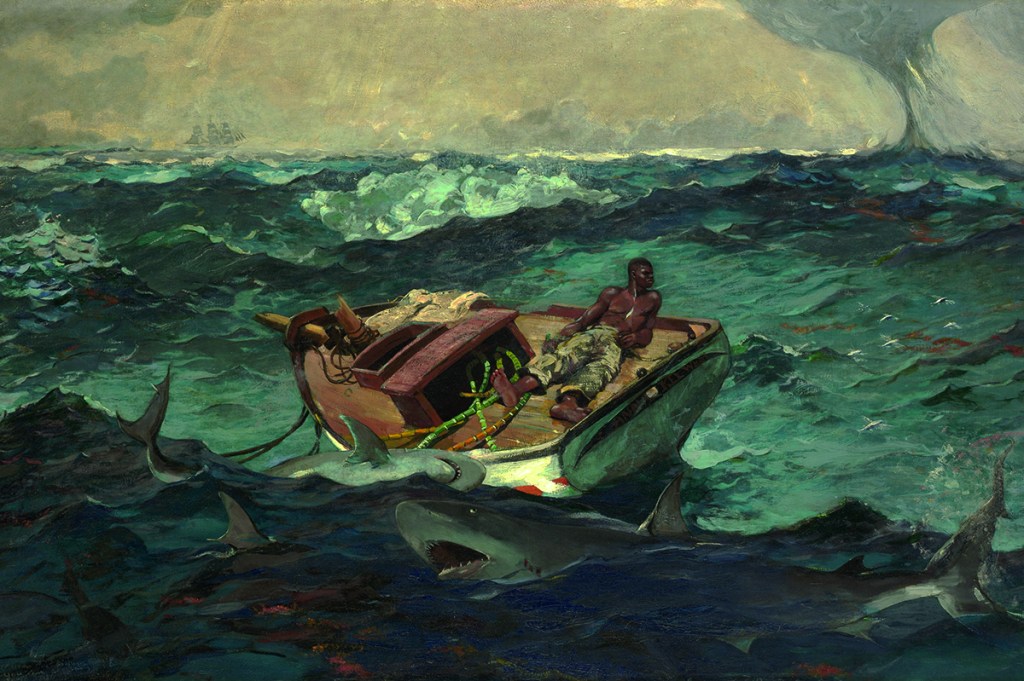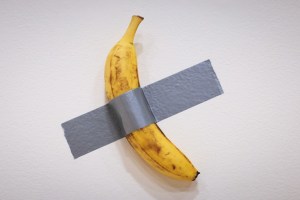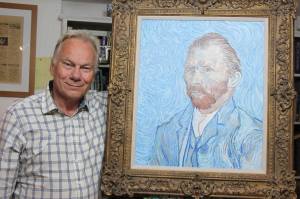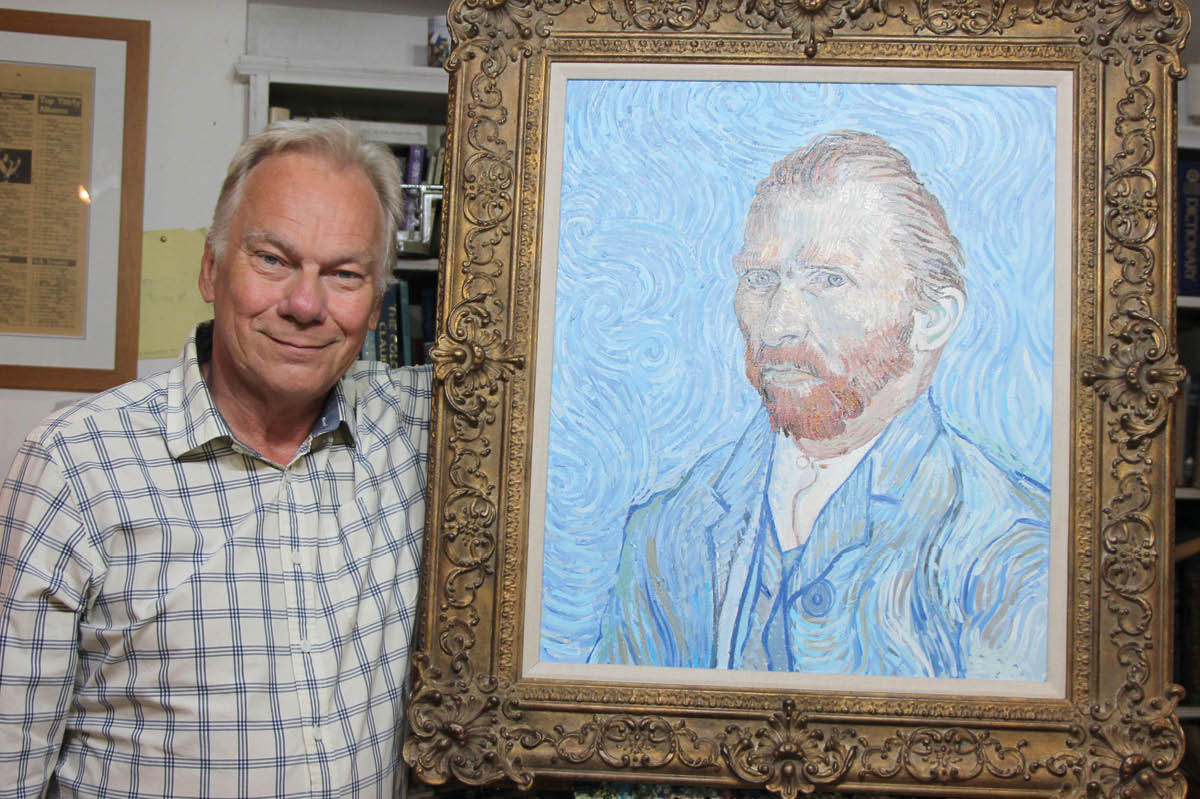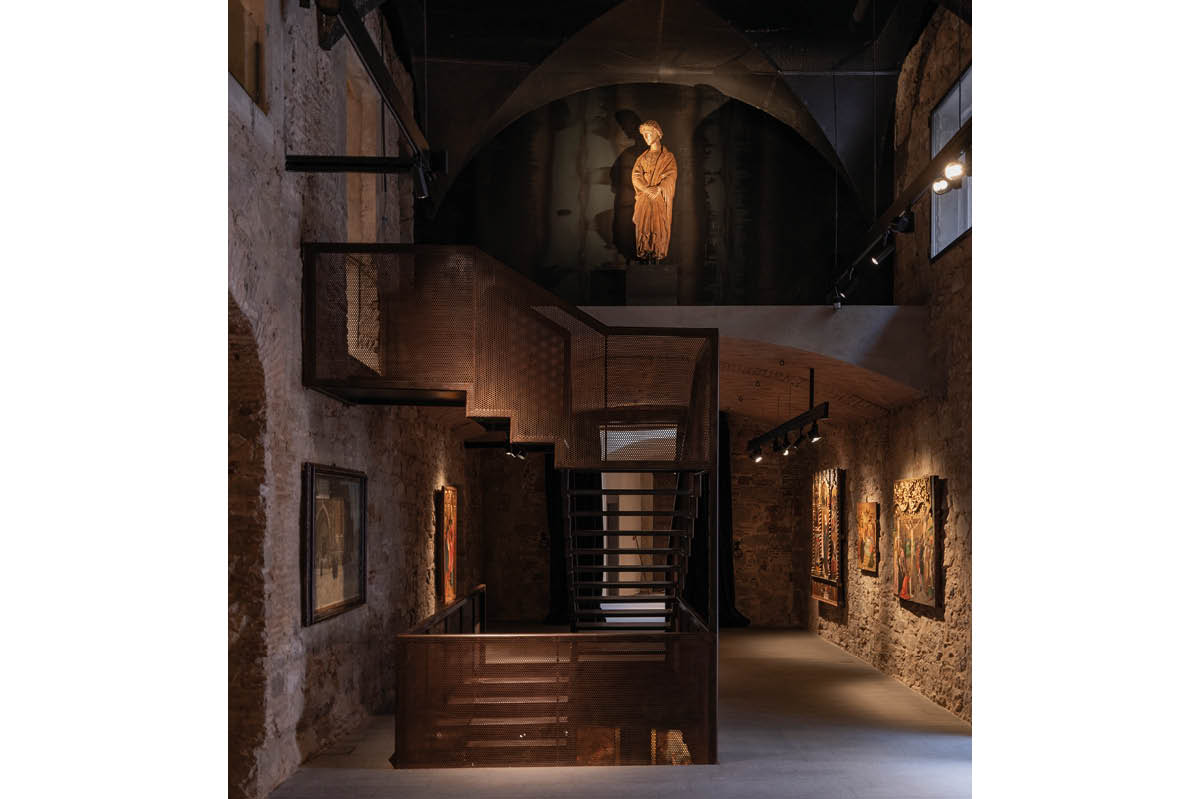The advance buzz on Winslow Homer: Crosscurrents wasn’t good. “Woke Winslow” — that’s how observers, online and through the grapevine, pegged the Metropolitan Museum of Art’s new exhibition of paintings and watercolors by Winslow Homer (1836-1910). The stalwart purveyor of maritime adventure and manly pursuits, woke? One glance at the enlarged black-and-white photo displayed at the front end of Crosscurrents — a blurred portrait of Homer in his Maine studio — makes clear that the fusty man with the impatient glare is no one’s idea of a social-justice warrior.
Looks aren’t everything, of course. Truth to tell, Homer’s art does touch upon important aspects of American history. But did the summer of 2020 really beg for a “diachronic focus on conflict and struggle in [Homer’s] production?” So promises Sylvia Yount, the Met’s Lawrence A. Fleischman curator-in-charge of the American Wing and co-organizer, along with Stephanie L. Herdrich, of Crosscurrents. Is it possible, in so many words, to reconcile “The Gulf Stream” (1899/1906), among Homer’s most iconographic canvases, with George Floyd and Black Lives Matter?
A curator cares for and maintains the items that have been entrusted to her. Political activism — hell, political commentary — shouldn’t be a prerequisite for the job. But let’s not be naive. Politics haven’t just seeped into our institutions; they’ve inundated them. When Herdrich, the Met’s associate curator of American Painting and Sculpture, insists the work be viewed “through the lens of conflict,” you know that Homer is about to be dragooned into the intersectional hothouse.
Consider “‘The Various Colors and Types of Negroes’: Winslow Homer Learns to Paint Race,” an essay in the exhibition catalogue by Gwendolyn DuBois Shaw, a professor at the University of Pennsylvania. Those familiar with Homer’s pictures of black life, whether as seen in the American South or the Caribbean, know they are characterized by a rare and carefully grained objectivity. Shaw knows this, but she’s not happy about it. So after commending Homer for “trusting his own instincts on coloring potently raced bodies,” Shaw puts him in his place for an “oblique reliance on the negatively stereotyped tropes of Black representation.” The professor giveth, and the professor taketh away.
The good thing about Crosscurrents is that it isn’t the catalogue. The begrudgery typifying our curatorial class is outshone at the Met by artistic fact. The show is the largest overview of Homer’s work in twenty-five years, containing eighty-eight pieces. “The Gulf Stream” is at its center, but there are other signal pictures on display. There are so many, in fact, that you begin to realize just how thoroughly Homer’s vision has been absorbed into the body politic. If anything, the work makes a case for the expansiveness of the American spirit. The old Yankee, bless his soul, does not go gently into that woke night.
Winslow Homer was born in Boston, Massachusetts. His father was a businessman prone to bad decisions, his mother an amateur watercolorist. The extent of Homer’s formal training was an eighteen-month apprenticeship to a commercial lithographer. A knack for the anecdotal and a clipped sense of composition, along with a daunting work ethic, led to a career in illustration. During the Civil War, Homer contributed on-site battlefield drawings for Harper’s Weekly. At the age of twenty-three, Homer packed his bags and headed to New York City, intent on becoming a painter.
Crosscurrents is divided into eight sections, each of which is devoted to a theme — the seaside of the Northeastern United States, for instance, or trips taken to tropical climes. “War and Reconstruction” opens the show, and the paintings featured in it are almost Tocquevillian in their perspicacity.
Homer’s experience as a journalist, working amid the carnage of war and its aftermath, likely accounts for the sobriety typifying the imagery. Homer was no sentimentalist. The pictures are bare-bones dioramas endowed with almost Biblical portent: a foolhardy soldier taunts the enemy, children attempt to farm war-torn ground, and a pair of young women wander through a field of cotton.
Homer had a pointed, if subtle, sense of irony. “The Cotton Pickers” (1876) is swathed in a beneficent light, but it’s no Arcadian idyll. The women pictured are emancipated slaves; the cotton they carry a reminder of their servitude. It’s an uncanny painting, marked by quietude and suffused with intimacy. The author F. Hopkinson Smith, a friend of Homer’s and a capable painter in his own right, described the canvas as “the whole story of Southern slavery.” Hindsight endows the painting with a preternatural gravitas — a sense of history as a burden foretold.
The most renowned of Homer’s pictures are centered on the ocean and dramatized by storm. Skies are dank and gray; waves surge and then surge some more; boats capsize; and those who sail the sea or live by it — well, good luck to them. Nature is relentless and violent, unforgiving and ominous. Typical is the “Ship’s Boat” (1883), in which a cadre of men grasp onto the side of an upturned lifeboat. The murky distance to which they signal for rescue offers slim chance of hope.
Homer’s paintings of tropical climes are, on the whole, less roiling in character. Certainly, the clarifying Caribbean sun suited Homer’s gift for watercolor, wherein the barest swipe of the brush yoked a radiant sense of climate from the white of the page. Homer thrived on the immediacy offered by the portability of watercolor: “I prefer every time a picture composed and painted outdoors. The thing is done without your knowing it.”
Which isn’t to say that life in the sunshine was without hazard. And here we circle back to “The Gulf Stream.” It’s a gripping image, for sure: a lone black man, shirtless and distracted, lies on a teetering skip, its mast broken off at the base. Blood filters through the surrounding waves; sharks are circling. Pitched on the horizon is a schooner sundering away from the crisis at hand. The canvas brings to mind a host of precedents, not least John Singleton Copley’s “Watson and the Shark” (1778) and Géricault’s “Raft of the Medusa” (1818-19). Homer’s painting is starker in its theatricality and not tied to a specific narrative — which may account for the consternation engendered upon its initial public display.
Viewers wanted a backstory. Homer did not suffer the public gladly. “The unfortunate negro,” he wrote, “will be rescued & returned to his friends and home, & ever after live happily.” Over and out! He went on: “I have crossed the Gulf Stream ten times & I should know something about it. The boat & sharks are outside matters of very little consequence.”
“Outside matters of very little consequence?” Nonsense. Artists are rarely the best interpreters of their own work. Contrary to Homer’s testy dismissal of narrative, “The Gulf Stream” betrays grim determination, a stoic refusal to grant credence to the most trying of circumstances. Homer’s moralism, like that of Melville or Conrad, is inescapable and weighted, stubbornly independent and elusive in its probity. Like the best art, “The Gulf Stream” resists ideological pigeonholing or the machinations of fashion. Homer will survive the distrust and condescension of our theory-besotted gatekeepers. In the meantime, Crosscurrents is filled with paintings that merit our puzzlement and earn our pleasure.
This article was originally published in The Spectator’s June 2022 World edition.



